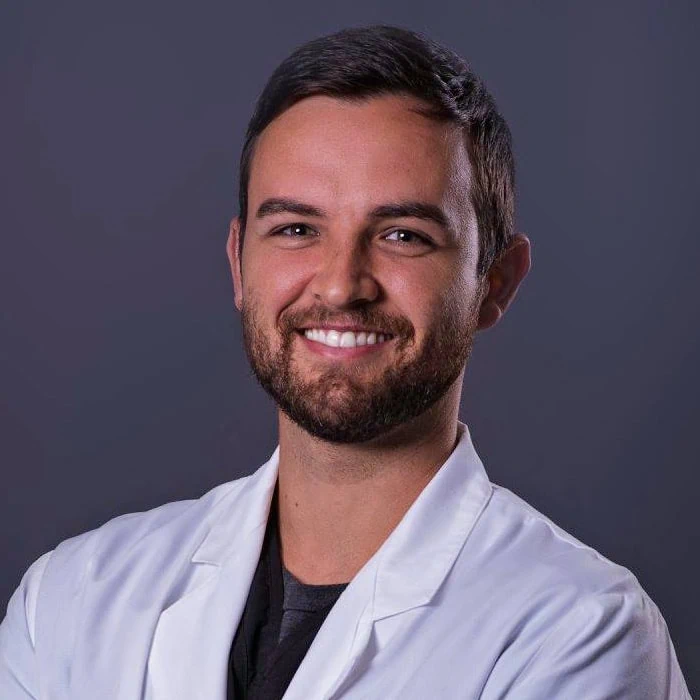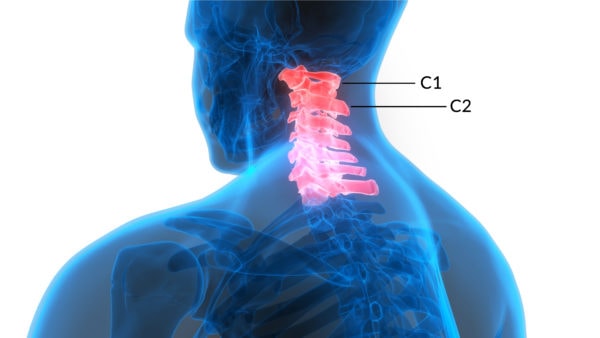Why Your Head May Feel Heavy

Medically Reviewed By:
Think of your head like a bowling ball balanced on the end of a stick—your spine. Muscles in the front, back, and top of the neck work together to support this balance. When the natural curve in the neck changes due to muscle weakness, the head may shift forward, creating a sensation of heaviness.
The spine’s muscles and ligaments work together to help provide stability. Ligaments act like structural supports, helping to maintain alignment, while deep muscles contribute to joint stability, allowing the spine to move, twist, and bend.
What Holds the Head On?
The alar and transverse ligaments in the upper neck help provide structural support for the head. The alar ligaments extend from the C2 vertebra and attach strongly to the skull, contributing to stability. The transverse ligaments help secure the pivot point between the C2 vertebra and the C1 bone, allowing controlled head rotation.
Additional ligaments also play a role in spinal support. The accessory ligaments connect C1 and C2, running along the sides of the dens (the tooth-like process of C2). The vertebrodural ligament (VDL), identified in recent anatomical research, extends between C1 and C2 and connects to the dura mater (the covering of the spinal cord). Some researchers suggest it may have a role in headache-related conditions.

Identifying Upper Neck Issues and Their Impact on Head Stability
Researchers, including Jim Elliott, PhD, have explored whether deep muscles in the upper cervical spine experience atrophy following an injury, similar to how the multifidus muscle in the lower back may weaken in individuals with chronic lower back pain.
Some studies using upper neck MRIs (magnetic resonance imaging) suggest that upper cervical muscles may atrophy in individuals with head and neck trauma, such as whiplash or direct impact injuries.
Research indicates that these muscles help stabilize the head on the neck. When the upper cervical region is injured, which often involves damage to the facet joints and ligaments, muscle function may be affected, leading to atrophy over time.
As these muscles shrink, they may provide less support to the head, contributing to a heaviness sensation. Reduced stability in the upper neck may also stress spinal structures, including discs, joints, nerves, and muscles, which has been associated with headaches. In individuals with traumatic neck injuries who experience headaches, upper cervical instability may affect movement and muscle function.

One way to assess this instability is by observing arm movement. Some patients report difficulty raising their arms overhead. In these cases, providing external stabilization of the head to mimic the role of the upper cervical stabilizer muscles may improve arm movement. This suggests that the upper trapezius function depends on head stability.
Physicians may use MRI or DMX (digital motion X-ray) imaging to evaluate ligamentous support in the upper cervical spine. MRI can visualize key upper cervical ligaments, including the alar, transverse, and accessory ligaments. If clearer imaging of the accessory ligaments is needed, a higher field-strength MRI, such as a 3T magnet, may provide better detail.
DMX, a newer imaging technique, captures a video X-ray while the patient moves their neck. Physicians in the licensed Regenexx network may use DMX because it allows them to assess whether the neck bones exhibit excessive movement, which may indicate ligamentous injury.
Common Neck Issues Linked To Head Discomfort
Neck conditions can contribute to persistent head discomfort, affecting daily activities and overall well-being. Below are some common issues associated with headaches, pain, and neurological symptoms.
How Do You Treat A Heavy Head Feeling?
Addressing discomfort in affected joints may be an important first step. Physicians in the licensed Regenexx network use interventional orthobiologic procedures, such as platelet-based and bone marrow concentrate (BMC) injections, to support joint function. In some cases, ligament injections may also be considered to promote stability and help manage symptoms.
A slow and controlled strengthening program is a good starting point. Some rehabilitation programs may incorporate adaptive training methods, such as an adapted iPad game where a patient’s head movements guide a ball through a maze to activate stabilizing muscles gently.
As progress is made, patients may transition to structured strengthening programs using specialized tools like the BTE Multi-Cervical Unit to enhance stability. This advanced physical therapy and chiropractic system assesses and treats the cervical spine, promoting long-term neck pain relief.
If additional support is needed, physicians may use image-guided injections to target affected ligaments precisely. One such procedure is the Percutaneous Implantation of the CCJ Ligaments (PICL).
The PICL procedure is an advanced interventional orthobiologic approach designed to target the craniocervical junction (CCJ) ligaments using BMC injections. The procedure is performed under real-time X-ray (fluoroscopy) and ultrasound guidance to ensure precise placement.
A specialized mouthpiece is used during the procedure to maintain positioning, and local anesthetic is applied for patient comfort. This advanced image-guided technique allows for precise targeting of the CCJ ligaments to support joint stability and function.
If you are experiencing a persistent heavy head sensation, consulting with a physician in the licensed Regenexx network may help you explore non-surgical options tailored to your condition.
These specialists utilize advanced diagnostics and interventional orthobiologic procedures to support joint stability, mobility, and overall function. Early evaluation and a personalized care approach may be key to managing symptoms and improving quality of life. Schedule a consultation to learn more about potential next steps.

Medically Reviewed By:
